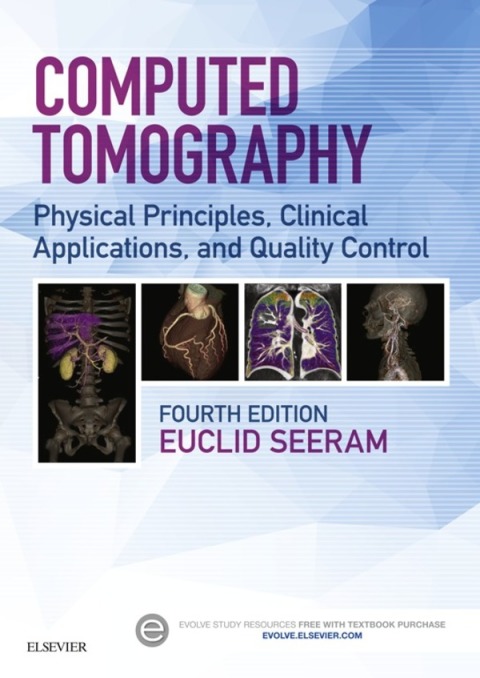Description
Efnisyfirlit
- Cover image
- Title page
- Table of Contents
- Copyright
- Dedication
- Contributors
- Reviewers
- Foreword
- Preface to the Fourth Edition
- Acknowledgments
- 1. Computed Tomography: An Overview
- Meaning
- Process
- How CT Scanners Work
- Historical Perspectives
- Applications of Volume Scanning
- Major Technology Trends
- CT Scanner Product Data: Characteristic Features
- Digital Image Processing
- 2. Digital Image Processing
- Limitations of Film-Based Imaging
- Generic Digital Imaging System
- Historical Perspectives
- Image Formation and Representation
- What is Digital Image Processing?
- Characteristics of the Digital Image
- Image Digitization
- Image Compression Overview
- Image Synthesis Overview
- Image-Processing Hardware
- CT as a Digital Image-Processing System
- Image Processing: An Essential Tool for CT
- 3. Physical Principles of Computed Tomography
- Limitations of Radiography and Tomography
- Physical Principles
- Technological Considerations
- Advantages and Limitations of CT
- 4. Data Acquisition Concepts
- Basic Scheme for Data Acquisition
- Data Acquisition Geometries
- Slip-Ring Technology
- X-Ray System
- CT Detector Technology
- Detector Electronics
- Data Acquisition and Sampling
- 5. Image Reconstruction
- Basic Principles
- Image Reconstruction from Projections
- Reconstruction Algorithms
- Types of Data
- Image Reconstruction in Single-Slice Spiral/Helical CT
- Image Reconstruction in Multislice Spiral/Helical CT
- Cone-Beam Algorithms for Multislice CT Scanners
- An Overview of Three-Dimensional Reconstruction Techniques
- 6. Iterative Reconstruction Basics
- Assumptions Made to Derive the FBP Algorithm
- Noise Reduction Techniques
- IR Algorithms without Modeling: Fundamental Concepts
- Modeling Approaches in IR Algorithms: An Overview
- Examples of IR Algorithms
- Performance Evaluation Studies of IR Algorithms
- Conclusion: A Noteworthy Perspective
- 7. Basic Instrumentation
- Computer Systems
- Software Concepts
- Computer Architectures and Processing Operations
- CT Scanner—Basic Equipment Configuration
- Imaging System
- CT Computer and Image-Processing System
- Image Display, Storage, Recording, and Communications
- CT and Picture Archiving and Communications Systems
- CT Control Console
- Options and Accessories for CT Systems
- Other Considerations
- 8. Image Postprocessing and Visualization Tools
- Image Postprocessing
- Windowing
- Two-Dimensional Image Processing: CT Image Reformatting Techniques
- Three-Dimensional Image Processing
- Visualization Tools
- Advanced Visualization and Analysis Workstations
- 9. Image Quality
- Spatial Resolution
- Low-Contrast Resolution
- Temporal Resolution
- CT Number Accuracy and Uniformity
- Noise
- Image Artifact
- Quality Control
- 10. Radiation Dose in Computed Tomography
- CT Use and Dose Trends
- Radiation Quantities and their Units
- Radiation Bioeffects
- Patient Exposure Patterns in Radiography and CT
- CT Scanner X-Ray Beam Geometry
- CT Dosimetry Concepts
- Factors Affecting Dose in CT
- Automatic Tube Current Modulation
- Iterative Reconstruction Algorithms
- Image Quality and Dose: Operator Considerations
- CT Dose Optimization
- Radiation Protection Considerations
- CT Dose Index Registry
- Image Wisely and Image Gently
- 11. Multislice Computed Tomography: Physical Principles and Instrumentation
- SSCT: Historical Background
- Conventional Slice-by-Slice CT Scanning
- Principles of SSCT Scanners
- Instrumentation
- Basic Scan Parameters
- Limitations of SSCT Scanners
- Evolution of Multislice CT Scanners
- Physical Principles
- Instrumentation
- Isotropic Imaging
- Image Quality Considerations
- Beyond 64-Slice MSCT Scanners: Four-Dimensional Imaging
- Beyond Single-Source Multislice CT Scanners: Dual-Source CT Scanner
- Advantages of MSCT
- Technical Applications
- Clinical Applications
- 12. Other Technical Applications of Computed Tomography Imaging: Basic Principles
- Cardiac CT Imaging
- CT Angiography: A Technical Overview
- CT Fluoroscopy
- Applications in Radiation Therapy: CT Simulation
- Medical Image Fusion Overview
- Flat-Detector CT
- Breast CT Imaging
- CT Screening
- Quantitative CT
- Portable Multislice CT Imaging
- 13. Three-Dimensional Computed Tomography: Basic Concepts
- Rationale
- History
- Fundamental Three-Dimensional Concepts
- Classification of Three-Dimensional Imaging Approaches
- Generic Three-Dimensional Imaging System
- Technical Aspects of Three-Dimensional Imaging in Radiology
- Rendering Techniques
- Editing the Volume Dataset
- Equipment
- Clinical Applications of Three-Dimensional Imaging
- Future of Three-Dimensional Imaging
- Virtual Reality Imaging: Technical Considerations
- Applications of Virtual Endoscopy
- Advantages and Limitations
- Software for Interactive Image Assessment
- Flight Path Planning
- Future of CT Virtual Endoscopy
- Role of the Radiologic Technologist
- 14. Positron Emission Tomography/CT (PET/CT) and Single-Photon Emission Computed Tomography/CT (SPECT/CT) Hybrid Scanners
- Principles of Pet Imaging
- Principles of Spect Imaging
- Summary
- 15. Computed Tomography of the Head, Cerebral Vessels, Neck, and Spine
- Indications
- Role of CT Compared with Other Imaging Modalities
- Sectional Anatomy: A Review
- Patient Preparation
- Positioning
- Scanning Protocols
- Radiographic Technique
- Contrast Media Usage
- 16. Computed Tomography of the Body
- Clinical Indications
- Examination Preparation
- Scanning Protocols
- 17. Pediatric Computed Tomography
- Multidetector CT
- Role of the CT Technologist
- CT of the Head, Neck, and Spine
- CT of the Chest and Abdomen
- Musculoskeletal CT
- CT Angiography
- 18. Quality Control for Computed Tomography Scanners
- What is Quality Control?
- Why Quality Control?
- Three Tenets of Quality Control
- Quality Control Tests for CT Scanners
- Appendix A. Spiral Versus Helical Spiral or helical CT: right or wrong?
- Appendix B. Cardiac Computed Tomography: Essential Technical Considerations
- Answers to Review Questions
- Glossary
- Index






Reviews
There are no reviews yet.